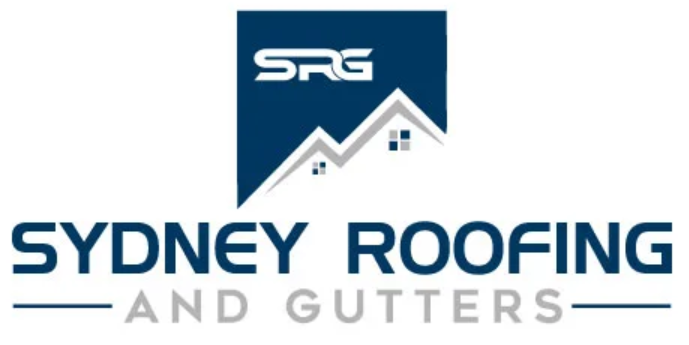Australia state by state: your best insulation options
When looking to insulate your home, you have a lot of choices to make. Which materials will give you the best thermal insulation? What’s the most affordable option?
And importantly, what will work well in your specific climate and region? In this post, we will break it all down for you by exploring the best insulation options for each Australian state.
So whether you’re in New South Wales or Western Australia, we’ve got you covered! Keep reading to find out more!

Australia state by state: your best insulation options
Queensland
Insulation in Queensland is different from other states because of its humid climate. For this reason, bulk fiber insulation is the best option as it won’t hold moisture as other materials can.
This will help keep your home cooler in summer and warmer in winter while saving you money on energy bills.
There are a few things to consider when installing insulation in Queensland, such as the type of climate you live in and the age of your home.
If you’re not sure what will work best for your home, speak to a professional before making any decisions.
New South Wales & South Australia
In New South Wales and South Australia, you have a few different options for insulation.
One option is to use bulk insulation made of materials like fiberglass or rock wool. This type of insulation is often used in walls and ceilings and can be installed by a professional or do-it-yourself.
Another option is reflective insulation, which reflects heat into the home instead of letting it escape. This type of insulation is often used in attics and crawl spaces.
Finally, there is spray foam insulation, which is sprayed onto surfaces like walls and ceilings.
This type of insulation is great for hard-to-reach areas and can also help improve your home’s energy efficiency.
Victoria
There are a few things to consider when choosing the best insulation for your home in Victoria. The climate in Victoria can be quite variable, with hot summers and cold winters.
This means that you need to choose an insulation material to keep your home comfortable all year round.
One of the most popular insulation materials in Victoria is wool. Wool is a natural insulator, and it does a great job of keeping your home cool in summer and warm in winter.
It’s also relatively inexpensive, making it an excellent option for budget-minded homeowners.
Another popular insulation material in Victoria is fiberglass. Fiberglass is made from recycled glass, and it’s an excellent insulator.
It’s also very affordable, making it another great option for budget-minded homeowners.
Victoria is a great place to live, and there are many insulation options available to keep your home comfortable all year round. Talk to a local insulation contractor to determine which option is best for your home.
Western Australia
It has a hot, arid climate, which means that homes in the state need to be designed for maximum energy efficiency.
The best way to insulate your home in Western Australia is to install double-glazed windows and doors and external blinds or shades.
You should also consider ceiling insulation and reflective foil insulation.
In addition to these measures, you can also help keep your home cooler in summer and warmer in winter by planting trees or shrubs around your home.
This will provide shade and help block out the sun’s heat in summer. In winter, the trees will lose their leaves and allow the sun’s warmth to penetrate your home.
Northern Territory
There are two main types of insulation available in the Northern Territory- bulk and reflective insulation.
Bulk insulation is made from materials including fiberglass, Rockwool, cellulose fiber, and natural fibers like wool.
It is installed on walls, ceilings, and floors to prevent heat loss or gain. Reflective insulation consists of foil-backed panels that reflect heat away from home.
It is most commonly used with bulk insulation to create a more effective barrier against heat transfer.
Both bulk and reflective insulation are available in various R-values (a measure of thermal resistance) to suit different climate zones within the Northern Territory.
In general, homes in hotter climates require higher R-values to keep the inside temperature comfortable.
Australian Capital Territory
If you live in the Australian Capital Territory, you have a few different insulation options.
One option is to install external wall cladding, which will help to keep your home cooler in summer and warmer in winter.
Another option is installing internal wall insulation, which can also help regulate the temperature inside your home.
Alternatively, you could install double-glazed windows, which will help to keep the heat in during winter and out during summer.
Whatever option you choose, make sure that you get professional advice to install it correctly.
Tasmania
Tasmania is one of Australia’s coldest and wettest states, so it’s no wonder that insulation is a top priority for many homeowners here.
Several different insulation options are available on the market, but some are better suited to Tasmania’s climate than others.
Fiberglass batts are a popular option for Tasmania because they effectively trap heat and keep homes warm.
However, they can be challenging to install properly and may not fit snugly in all spaces.
Another option is spray foam insulation, which can be easily applied to any space and will conform to the shape of the area it’s being sprayed into.
This makes it an ideal option for difficult-to-insulate areas like around corners and in tight spaces.
Whichever insulation option you choose, ensure it’s appropriately installed to maximize its effectiveness.
Insulation is an essential part of keeping your home warm in Tasmania, so make sure you invest in a quality product that will do the job well.
How do you choose the right insulation batts in Australia?
It depends on the climate, as different states and territories have unique weather conditions.
Install insulation products to help radiant heat flow with reliable heating and cooling costs.
You can hire insulation specialists who can help choose the suitable roofing material thermal performance.
ACT:
You need to be prepared for both cold winters and hot summers in the ACT. For this reason, we recommend using glass wool insulation batts with a higher R-value.
This will ensure your home is comfortable all year round. The floor insulation will help in cooler climates and aims to reduce heat gain.
NSW:
If you live in NSW, you’ll need to consider the state’s humid climate. For this reason, we recommend using insulation batts made from natural materials like wool or cellulose.
These materials are good at resisting moisture so that they won’t succumb to mold or mildew.
NT:
The Northern Territory has a tropical climate, so you’ll need to use insulation batts that can cope with high humidity levels.
We recommend using Rockwool or cellulose insulation in this climate. Roof insulation is helpful in warmer climates.
QLD:
Queensland is known for its hot and humid weather, so you’ll need an insulation batt to cope with these conditions. We recommend using Rockwool or cellulose insulation in this climate.
SA:
South Australia has a Mediterranean climate, which means it experiences hot, dry summers and cool, wet winters.
For this reason, we recommend using glass wool insulation batts with a higher R-value. This will ensure your home is comfortable all year round.
What insulation has the highest R-value?
There are a variety of insulation materials available on the market, each with its own R-value.
The material with the highest R-value is closed cell spray foam, which has an R-value of around 6.5 per inch.
Other high-performing insulation materials include rigid foam boards, blown-in fiberglass and cellulose, and Reflectix Radiant Barrier.
Conclusion
So, what are your best insulation options in each Australian state? Check out our interactive map below to find the most effective type of insulation for your home.
And don’t forget to think about air quality – make sure you choose an environmentally friendly insulation option that doesn’t contain harmful chemicals.
Thanks for reading, and be sure to check out our other posts for more tips on keeping your home healthy and energy-efficient!
Check out blog on Kiwai waterfall Pakistan.



